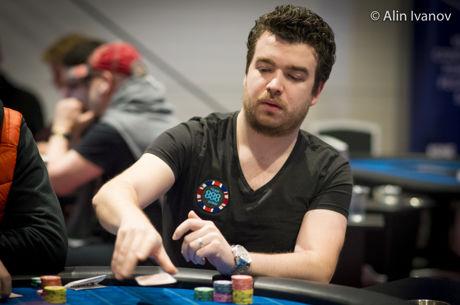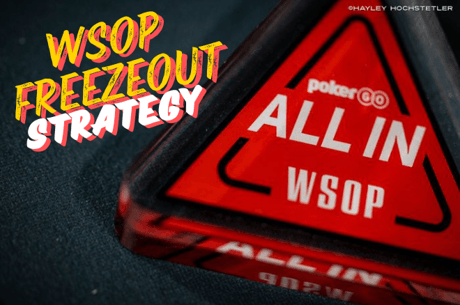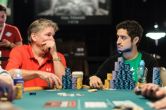Three Lessons Learned From Televised Poker Mistakes

Watching the World Series of Poker Main Event broadcast back in 2003 was my first exposure to no-limit Texas hold'em. I learned a lot about the game by watching players make great moves on TV. However, I also picked up some bad habits that I later had to work to remove from my game as I became a more serious player.
With experience, I've learned to identify mistakes that recreational players make on TV and learn from them. Here are three lessons I learned in one hand while watching the WSOP Main Event coverage a few years ago.
1. Don't call with weak hands in front of aggressive players
This is common mistake that many amateurs make. Someone limps or makes a small raise in early position. You're in middle or late position with a hand that is barely playable like a suited three-gapper or an offsuit two-gapper. You look at the money in the pot and decide you have the odds to call.
A price like 3-to-1 or 4-to-1 may seem great in this spot, but what amateurs fail to realize is that they won't always get to see the flop for that price if they have an aggressive squeezer behind them.
The 2014 WSOP Main Event coverage provides a classic example of this situation. A player opened UTG with 8?8? and got called by three amateurs holding K?J?, K?8?, and J?7?, respectively. The big blind in this hand was the aggressive pro Kyle Keranen who made a large squeeze-raise to 11 big blinds with 3?3?.
With an aggressive squeezer behind, the callers should have either three-bet or folded these hands in the first place. Instead, their calls set Keranen up perfectly for a profitable raise. The original raiser folded and everyone else should have done the same. However, in this hand, the initial caller decided to compound his error by making the next mistake in our list. He back-raised his K?J? with almost no fold equity.
2. Don't bluff when you have no fold equity
The initial caller was an amateur named Jim Duncan. At the start of this hand, Duncan had about 30 BBs. This is a decent stack in the Main Event because you have tons of time to be patient. In addition, the bubble had only recently burst, so there would likely have been tons of shorter stacks making desperate moves that Duncan could have picked off with his 30 BB stack without risking his tournament life.
Instead Duncan decided to get fancy. After calling that UTG open from UTG+1 with K?J?, he made matters worse by snap-shoving over Keranen's huge squeeze with no fold equity. Now granted, this is a very strong play. I would have put Duncan on AK, JJ+ to make this move. Let's give Duncan the benefit of the doubt and assume he'd seen Keranen make squeezes like this before and was therefore setting him up with this play.
Even so, Duncan shouldn't have snapped-shoved. If he'd taken a second to think, he'd realize that the size Keranen made it relative to the effective stack pretty much destroyed his plan. With only 30 BBs, Duncan's back-raise offered Keranen odds of around 2.5-to-1. This means that even if Duncan's shoving range was AK, JJ+, Keranen would still have had odds to call with any pair and any suited ace �� in other words, hands that probably made up a huge percentage of his squeezing range.
Realizing this, Keranen made the call when the action folded back around to him. His threes held up to send Duncan to the rail for a Main Event min-cash.
3. Don't answer when pros ask for information
In his book Verbal Poker Tells, author Zachary Elwood says "there's not much upside in talking during a hand �� and there's a potential downside."
This observation highlights another common mistake that amateurs tend to make. They're all in and waiting for their opponent to make a decision. The opponent asks them a question to fish for information and they are too often more than willing to give a response. This is bad enough when playing against other recreational players, but it is an even worse idea when playing against a pro.
In the example hand, Duncan made this mistake while waiting for Keranen to decide whether or not to make the call with his pocket threes. Kerenan asked Duncan if he had ace-king. Duncan replied "call and find out" in a faint voice that was barely audible.
Kerenan continued to fish for information and to his credit, Duncan ignored him for the rest of the hand. However by that point, the damage had already been done. To be fair, Keranen was probably going to call based strictly on the math, but maybe Duncan's response helped to validate his decision.
Conclusion
These three errors are ones that many of us recreational players make. We play too many hands, usually passively, and without regard as to how they fit in our overall range. We don't keep up with stack sizes well and we love to talk.
Granted, playing this way can be fun �� and not such a big deal if fun is your main goal. If instead you seek to lose less often, you have to understand how these things are hurting your profitability.
Televised poker coverage is full of examples of professionals exploiting us recreational players. If you watch with an analytical mind and not just for the entertainment value, you can learn how to avoid committing the same mistakes.









